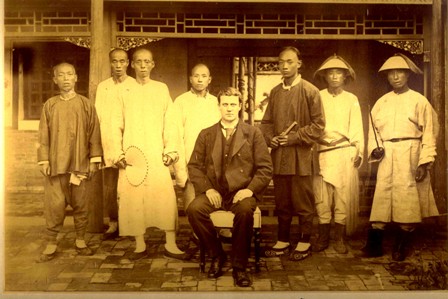
George Ernest Morrison with Chinese Group